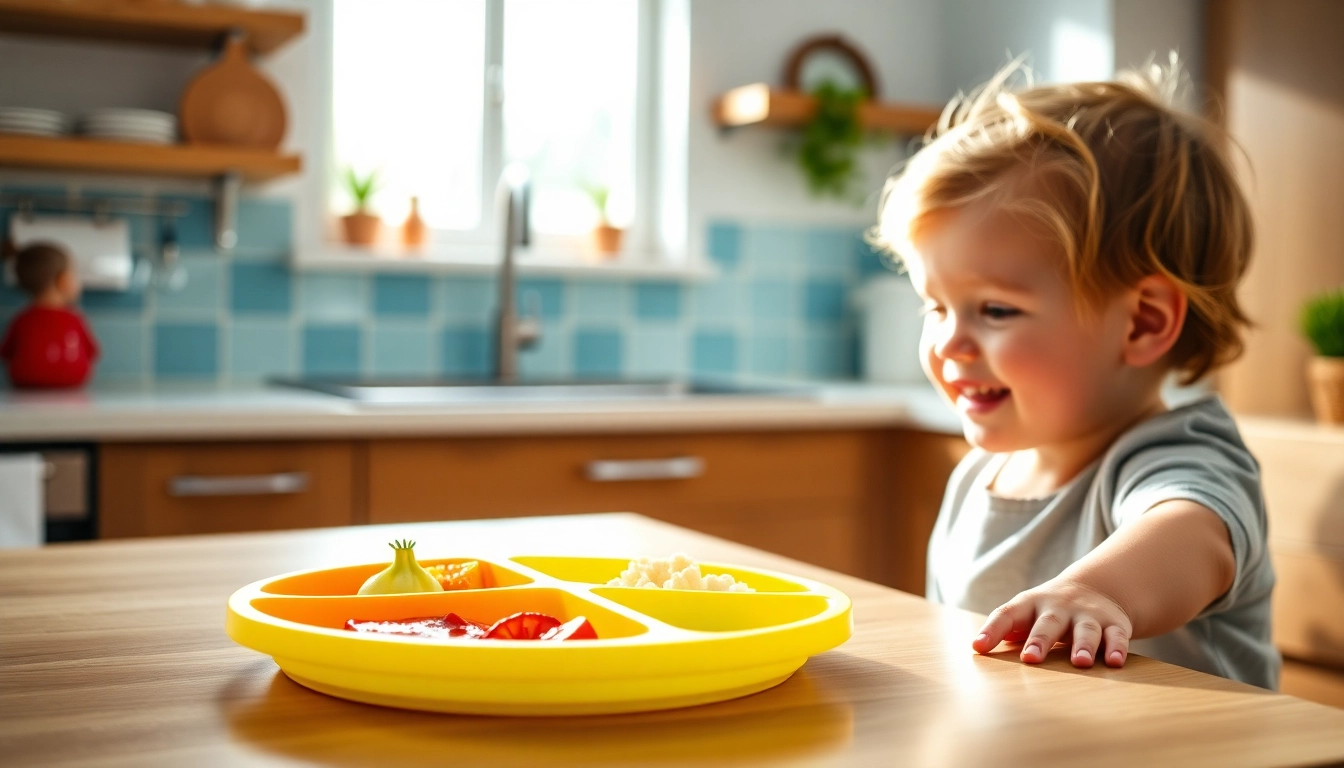Understanding the Benefits of Silicone Divided Plates for Self Feeding
In recent years, the emphasis on early childhood independence and self-feeding skills has grown significantly among parents, caregivers, and pediatric nutrition experts. Among the tools facilitating this developmental milestone, the Silicone divided plate for self feeding stands out as an essential product designed to foster autonomy while ensuring safety and practicality. These plates are crafted to support children’s natural desire to explore their food, learn serving portions, and develop fine motor skills in a fun and manageable way.
Promoting Autonomy in Young Children
Encouraging self-feeding during toddlerhood is a crucial step toward fostering independence and confidence around mealtime. Silicone divided plates are specifically tailored to facilitate this transition by offering clearly defined compartments, making it easier for young children to identify and manage different food types independently. The distinct sections help children distinguish between different textures and flavors, which in turn stimulates their curiosity and appetite. Moreover, actively participating in meals encourages children to develop a sense of control and ownership over their eating routines, which can reduce fussiness and support healthy eating habits over time.
Safe and Non-Toxic Materials for Healthy Feeding
The safety of children should always be a priority, especially when it involves their direct contact with feeding utensils and dishware. Silicone plates are manufactured using certified food-grade silicone that is free from harmful chemicals like BPA, phthalates, and lead. This material is inert, meaning it doesn’t leach toxins into food, even when exposed to heat or prolonged use. Italian-made silicone products are renowned for their rigorous safety standards, reflective of the country’s tradition of quality control in children’s products. By choosing a Silicone divided plate for self feeding, parents can ensure that mealtime remains safe, healthy, and free from substances that could interfere with their child’s development or health.
Ease of Use and Cleaning for Busy Parents
Modern parenting requires practicality, especially during busy mornings and hectic mealtimes. Silicone divided plates are lightweight, non-slip, and resistant to chipping or breaking, making them ideal for active environments. Their smooth surface allows for effortless cleaning—simply rinsing with warm water or placing them in a dishwasher suffices. Unlike ceramic or plastic counterparts, silicone resists staining and odors, maintaining hygiene and appearance over time. This ease of maintenance reduces parental stress and ensures a hygienic dining environment for children.
Key Features to Look for in a Silicone Divided Plate for Self Feeding
Design and Compartments for Balanced Meals
The hallmark of a high-quality silicone divided plate is its thoughtful design. Plates equipped with multiple compartments allow parents to serve diverse food groups—vegetables, proteins, grains—in separate sections, promoting balanced nutrition. For children, visual cues from colorful and well-structured compartments assist in understanding portion sizes and food diversity. Some plates feature adjustable or removable sections, accommodating different meal types or portion sizes as the child grows. Additionally, rounded edges and a non-slip base enhance safety and usability, preventing spills and accidents during mealtime.
Material Certifications and Safety Standards
Selecting a plate made with certified food-grade silicone is non-negotiable. Certifications such as LFGB (European Safety Standard) or FDA approval in the United States indicate that the product complies with strict safety and health regulations. When evaluating a product, look for marks indicating BPA, phthalates, and lead free. Italian manufacturers often lead the way in adhering to these certifications, ensuring that the product does not contain any harmful substances that could compromise your child’s health.
Durability and Resistance to Bacteria
A durable silicone plate can withstand drops, bites, and frequent washings without cracking or losing effectiveness. Its resistance to bacteria is due to its non-porous surface, which doesn’t harbor germs or mold. This attribute simplifies cleaning routines and maintains hygiene, particularly important for children whose immune systems are still developing. Investing in a resilient, easy-to-clean product guarantees long-term usability, making it a cost-effective choice for busy families.
Tips for Introducing a Silicone Divided Plate to Your Child’s Routine
Gradual Transition from Traditional Utensils
Transitioning to a silicone divided plate should be a gradual process. Start by introducing the plate alongside familiar utensils, encouraging the child to explore its features without pressure. Use positive reinforcement to make mealtime engaging, emphasizing the fun of eating with new tools. Present colorful, age-appropriate foods in the divided compartments to spark interest. Over time, children learn to manage their food portions and develop self-feeding skills naturally.
Making Mealtime Fun and Engaging
Children are more likely to enjoy mealtime if it’s perceived as a playful activity. Incorporate storytelling, colors, and shapes—using bright silicone plates shaped like animals or rainbows, for instance—to stimulate their senses. Allow them to choose some of their foods or participate in the feeding process, such as scooping or picking up finger foods. Creating a positive, relaxed environment fosters enthusiasm and reduces mealtime battles.
Overcoming Common Challenges in Self Feeding
Common issues include messiness, reluctance to try new textures, and difficulty managing portions. To address messiness, opt for plates with non-slip bases and consider placing a mat underneath during initial training phases. For texture challenges, introduce varied consistencies gradually, encouraging exploration without overwhelming the child. Patience and consistent encouragement reinforce confidence and help overcome initial hurdles.
Practical Meal Ideas Using a Silicone Divided Plate
Colorful Vegetable and Protein Combos
Enhance nutritional value and visual appeal by combining vibrant vegetables with proteins like chicken, fish, or legumes. For example, serve steamed carrots and broccoli with shredded chicken in separate compartments, highlighting color variety and encouraging children to try different foods. Add a small portion of whole grains in another section to round out the meal.
Healthy Snacks and Finger Foods
Use divided plates to serve an array of healthy finger foods, such as fruit slices, cheese cubes, or veggie sticks. These options promote self-feeding practice and independence, making snack time both nutritious and enjoyable.
Incorporating Different Textures and Flavors
Gradually introduce foods with varying textures—soft, mashed, crunchy—to expand a child’s palate. Season foods subtly to develop flavor preferences and avoid overwhelming sensitive taste buds. The clear separation provided by the plates helps children associate specific textures with particular foods, facilitating acceptance and curiosity.
Measuring Success: How to Assess Self Feeding Progress with Silicone Plates
Indicators of Increased Independence
Signs include the child consistently attempting to scoop or pick up foods, managing smaller portions without spills, and showing enthusiasm toward mealtime. Watching their ability to use utensils properly, even if imperfectly, indicates growth toward autonomy.
Adjusting Portions and Meal Components
As children develop their self-feeding skills, gradually increase portion sizes or introduce more complex foods. Pay attention to their preferences and experiments with different textures and combinations, adjusting the meal plan to support ongoing development.
Feedback and Encouragement Strategies for Parents
Offer consistent positive reinforcement, like praise and encouragement, to boost confidence. Keep mealtime relaxed and avoid pressuring children, which can lead to aversion. Maintain a routine, and involve children in meal preparation to foster a sense of involvement and mastery.

